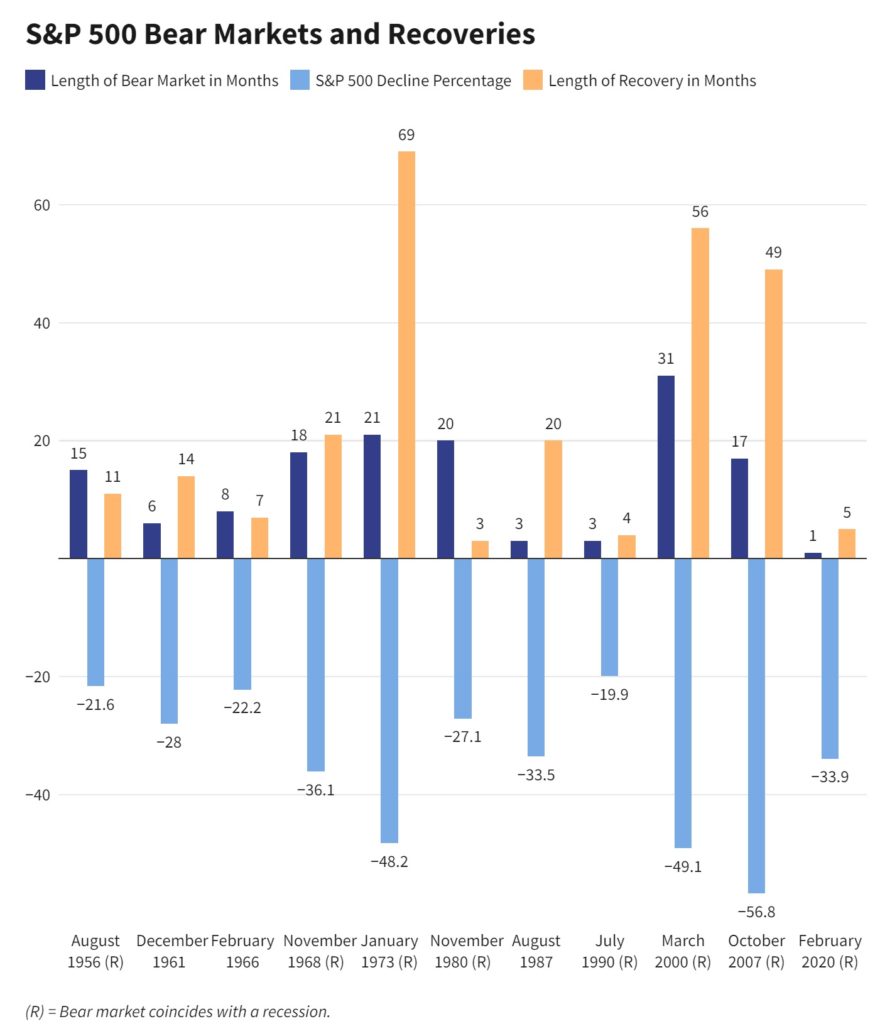

Date: 9/20/2022
Author: Chris Hood
We are firmly within a bear market.
Investor confidence is shaken. The US and global economy seem fundamentally flawed.
And the Fed’s insistence on continued aggressive interest rate hikes doesn’t bode well for future equity prices.
As an options trader, I’ve been able to capitalize on these down movements with bearish positions. My tools also continue to allow my subscribers and I to quickly snag gains off the dips and rallies in this falling market.
For skilled traders, it honestly doesn’t matter which direction the market moves.
However, for most buy-and-hold investors or bullish-minded traders, there’s not much to get excited about.
It’s easy to get caught up in fear.
And when you’re afraid, you miss opportunities.
One thing is sure, this isn’t the first bear market, and it won’t be the last. So the only real question is when it will end.
So when looking at your portfolio and it looks like a bloodbath, consider the following to keep yourself in the right mindset.
Bear markets always end, and bull markets always follow.
History demonstrates that whatever the circumstances – from World Wars to housing market collapses – what goes down inevitably rises again.
So hold on to your stocks.
The present always evokes more emotion than the future, but those who can control their fear will be able to grow their wealth over time.
A recent report by Yardeni Research analyzed bear and bull markets back to the 1950s.
The chart below provides some visual insight on this.


They found that the average bear market lasts about one year.
Now keep in mind that this is only an average.
The longest was the Dotcom Bubble bursting in the early 2000s. That one took almost 2.5 years to bottom out.
And the shortest, if you genuinely consider it a bear market was the COVID pandemic crash in 2020 that only lasted about a month before prices started to soar.
Those with foresight and liquidity tend to make off like bandits when the market turns around.
So rather than selling it all and running for the hills, consider this.
You may have the chance of a lifetime to pick up some stocks at amazing discounts – buying at prices that may significantly increase your wealth in the coming years.
Timing the bottom is impossible, and investors typically use one of three methods to buy during the bear season.
The first is averaging down.
Since no one knows precisely when the market could turn around, accumulating shares on the way down allows you to bring down the average cost of your position.
That way, you won’t miss any opportunities.
A second method is to study the charts and await the reversal – look for confirmation (according to your rules) that the trend is changing.
With this method, you might not get the absolute lowest prices, but you’ll still be in before the long move up.
This typically appeals to more conservative investors and requires intensive analysis.
Finally, you could delve fully into the fundamentals of companies.
Many investment strategies determine how undervalued companies are, and their potential for future growth.
They typically use one of many methods involving the price-per-earnings (P/E) ratio. Only when a company reaches a particular valuation do they buy.
Honestly, I think this method is cumbersome, subjective, and tedious, so I don’t bother.
For those interested, plenty of resources are available to help you out.
Whatever you do, just keep your wits about you.
Bear markets never last forever.
Cheers,
Chris Hood








